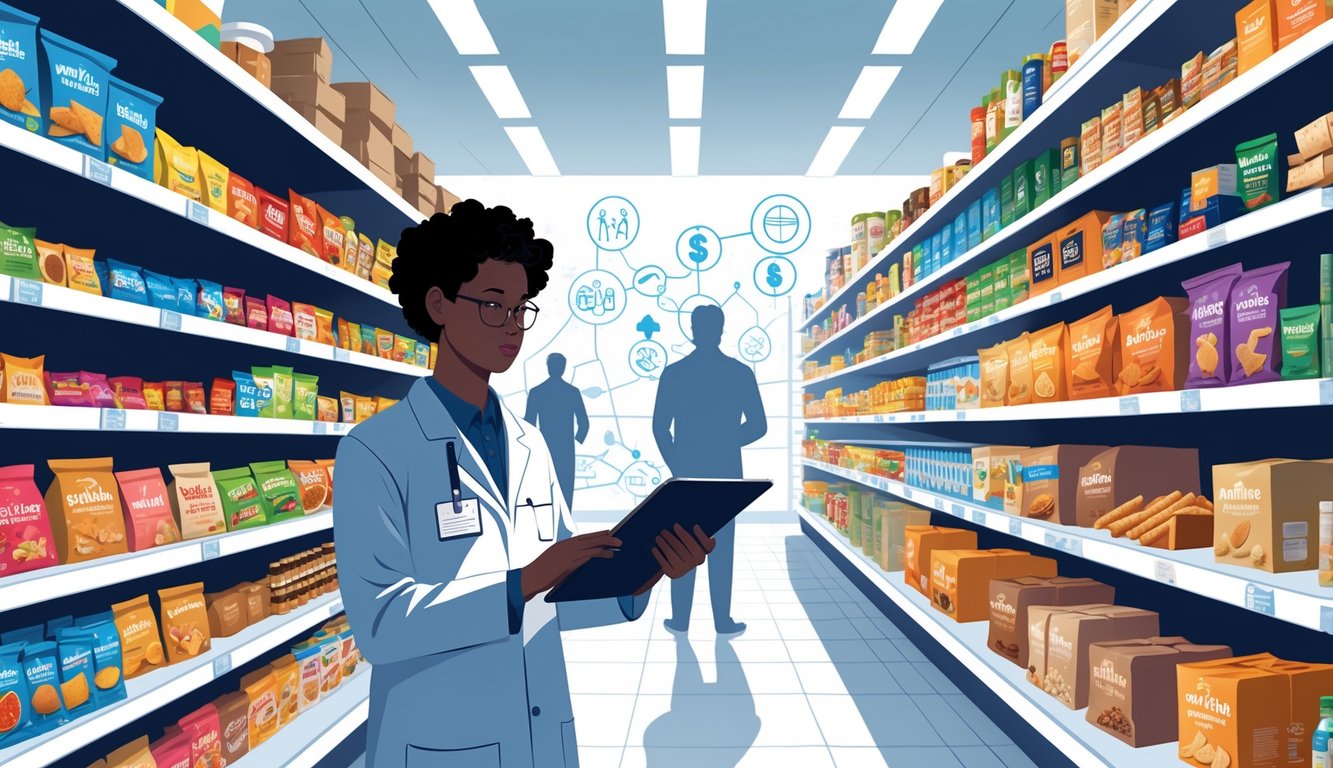
Shelf Life Concerns
I swear, I keep this ridiculous chart of snack shelf life targets versus what actually happens in the lab, and it changes every time I check. Once, a “premium” granola bar batch went rancid in half the time just because they swapped coconut oil for soybean. Still don’t know why. Shelf life isn’t just about taste or mold. There’s chemical safety, allergens sneaking in, plasticizers leaching out of wrappers when things get hot (saw that myself during a recall audit—nightmare).
What gets me: people see “best by” dates and think they’re golden, but those are based on sped-up tests (the Arrhenius method—just means they crank up the heat and hope for the best). That doesn’t catch slow flavor death or vitamins quietly vanishing. And the real kicker? A shelf life review from December 2023 said food safety collapses fast at temperature extremes. Shorter shelf life means less nutrition, more trash, or, worst case, actual danger—listeria, staph, you name it. A microbiologist told me, “About 60% of ‘stable’ snacks fail our tests before six weeks in warm storage.” So if you hear that crinkly bag sound, maybe check twice before eating. Expiration dates? They lie. A lot.
Brand-Specific Examples and Market Trends
I try to tally up what I spend just grabbing snacks—chips, popcorn, and, fine, those massive ice cream tubs—and the price always jumps. Not just the sticker, either. It’s the hidden stuff: new ingredients, fancier packaging, “healthy” claims that are just smoke and mirrors.
Favorite Snacks: Potato Chips and Popcorn
Seriously, Lay’s Classic isn’t staying at $3. Not when they keep swapping sunflower oil for “high-oleic” versions—supposedly healthier, but I don’t buy chips for my heart. Global Snack Market Trends had a chart showing protein-fortified chips are almost double the price per ounce. Who eats chips for protein? Now they’re cramming in pea starch, and popcorn? The “ancient grains” thing is everywhere, but per serving, those bags cost 34% more than they did in 2022, “value pack” banners or not. Turmeric-spiced, chia-infused popcorn? It’s $3 more for a bag nobody asked for. Kettle cooked chips are crunchier, but the sodium’s wild, and the National Institute of Nutrition flagged higher acrylamide. Not exactly a win.
Coca-Cola, Orange Juice, and Ice Cream
Coca-Cola’s “Zero Sugar, New Taste” rolls out and suddenly we’re supposed to cheer for no sugar. But the cost? Sugar substitutes like Acesulfame K and Sucralose aren’t cheap—production costs up, shelf price up almost 8% last year, according to the State of Snacking Data dump. Orange juice is another weird one: “Not from concentrate, squeezed daily” is everywhere, but sometimes they cut the fruit content to stretch shelf life. And shelf-stable OJ? More preservatives, more stabilizers, but I don’t see any price break.
Ice cream, oh man, don’t get me started. “Plant-based” coconut or oat milk stuff gets this healthy halo, but it’s 20–40% pricier than dairy (yep, I checked the Functional Snacking 2025 report, pages 8–11). And every other week there’s a recall for nut-based “dairy-free” with trace allergens. My allergist just sighs at this point.
Emerging Trends in Snack Reformulation
Protein’s in everything now. “Superfood” was the word in 2019, now it’s “fortified” slapped on every snack. Some big snack company quietly swapped peanuts for almonds in their “Energy Mix” (2025 Global Snack Market data, if you care), but almonds cost more and are allergy bombs—nobody seems to factor that into the price.
Retailers keep hyping “on-the-go” nuts and popcorn with “proprietary probiotics” (triple-layered yogurt coating, immunity, whatever). Actual research? Basically nonexistent, unless you trust trade show panelists in Chaucer Foods’ Trendwatch. More “climate-neutral” claims, but ingredient traceability is still a joke. Consumer Reports called out popcorn brands for this three months ago—no real response.
Sometimes reformulation’s just chasing fads, sometimes it’s about new sodium or sugar rules, but either way, the cost lands on me. Learned the hard way: switching to baked chickpea chips from Lay’s meant paying 28% more for a third of the flavor.
Consumer Reactions and Potential Solutions
Nobody warns you about how many choices you’ll face in the snack aisle—Target, discount grocer, whatever—and why does every “healthy” snack look the same except for the fine print? Ingredient swaps, reformulations, marketing—hidden costs everywhere, and I’m stuck between sticker shock and empty promises. Transparency? Good luck, unless you really want to decode the back of a veggie chip bag.
Shopping Habits and Snack Choices
Now every shelf screams “plant-based” or “natural,” like that’ll make me forget the $7 price tag on air-popped chickpea sticks. The USDA said food-at-home prices jumped 11.4% in 2022. “Shop smarter,” people say. Sure, if you haven’t already blown your budget on eggs and rent.
I see shoppers (me included) squint at sodium numbers or palm oil, then ditch brands for generics or just grab whatever’s on BOGO. Dietitians keep warning that reading labels won’t always catch the sneaky stuff—additives, ultra-processing, things even the pros miss. One time, a friend bought “clean label” snacks at Target—turned out, the new version just hid more sugar under a new name. Reformulation roulette. We lose every time.
Snack choices are just a mess of tradeoffs. What’s cheap, what’s maybe healthier, which ingredient swap will show up next week. Sometimes, honestly, I just wait for markdown stickers.
Demands for More Transparency
NPR did a story a while back—consumers (me included) want brutally honest ingredient lists. But brands just slap on “ethically sourced” badges or QR codes that go to some never-ending PDF. Who’s got time for that while wrangling a toddler and looking for the least-bad granola bar? It’s a scavenger hunt, but not the fun kind.
I’ve seen petitions for EU-style origin statements in the US, especially after some post-pandemic reformulations swapped out artificial additives. Still doesn’t explain why “natural flavorings” is a black box. Harvard (2023) said 64% of people don’t trust snack marketing anymore—higher than before inflation, which checks out.
Transparency’s a joke. You only get real info after a recall or a viral TikTok whistleblower, and then it’s buried in PR double-speak. People lose trust, go back to basics, or just stop buying certain snacks—until boredom or payday wins out.
Industry Responses and Reformulations
Food companies, especially the ones filling Target’s shelves, scramble to “reformulate” after bad press. Sometimes it sticks (less trans fat, fewer fake colors). Other times, it’s just swapping one cheap additive for another, slightly less hated one—nobody notices, cycle repeats.
Execs love tossing around “sustainable reformulation” for the press. Most of it’s fluff. General Mills ditched high-fructose corn syrup for tapioca syrup in some bars, then jacked up the price anyway. So what’s the point? Food science consultants I know say brands fear losing shelf space more than any ingredient, so Target and the like only push for stricter bans when shoppers revolt or something goes viral.
Reformulation works if it comes with honest pricing. Usually, though, it’s just musical chairs—same costs, same questions, no fix until someone calls out the next shortcut.



